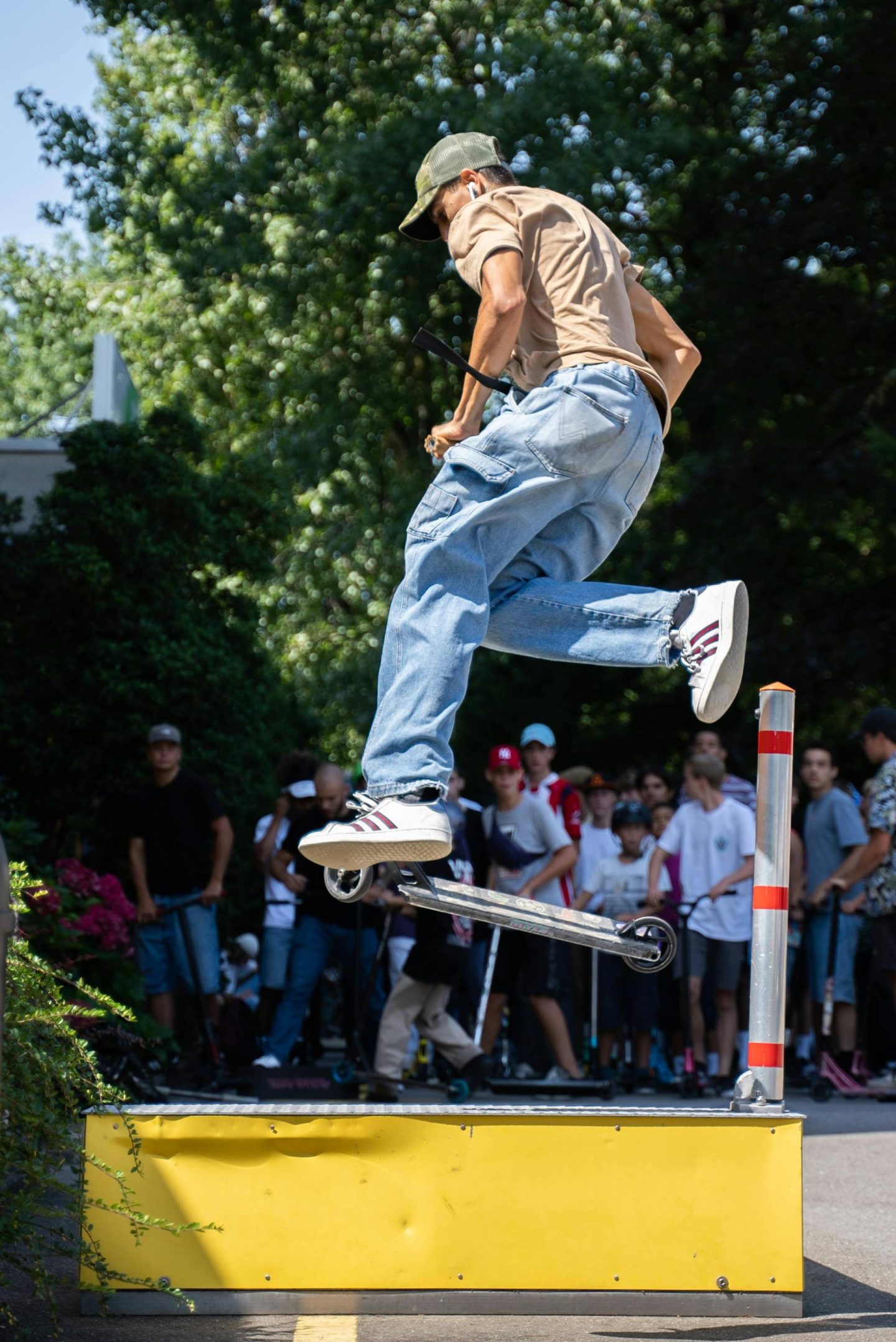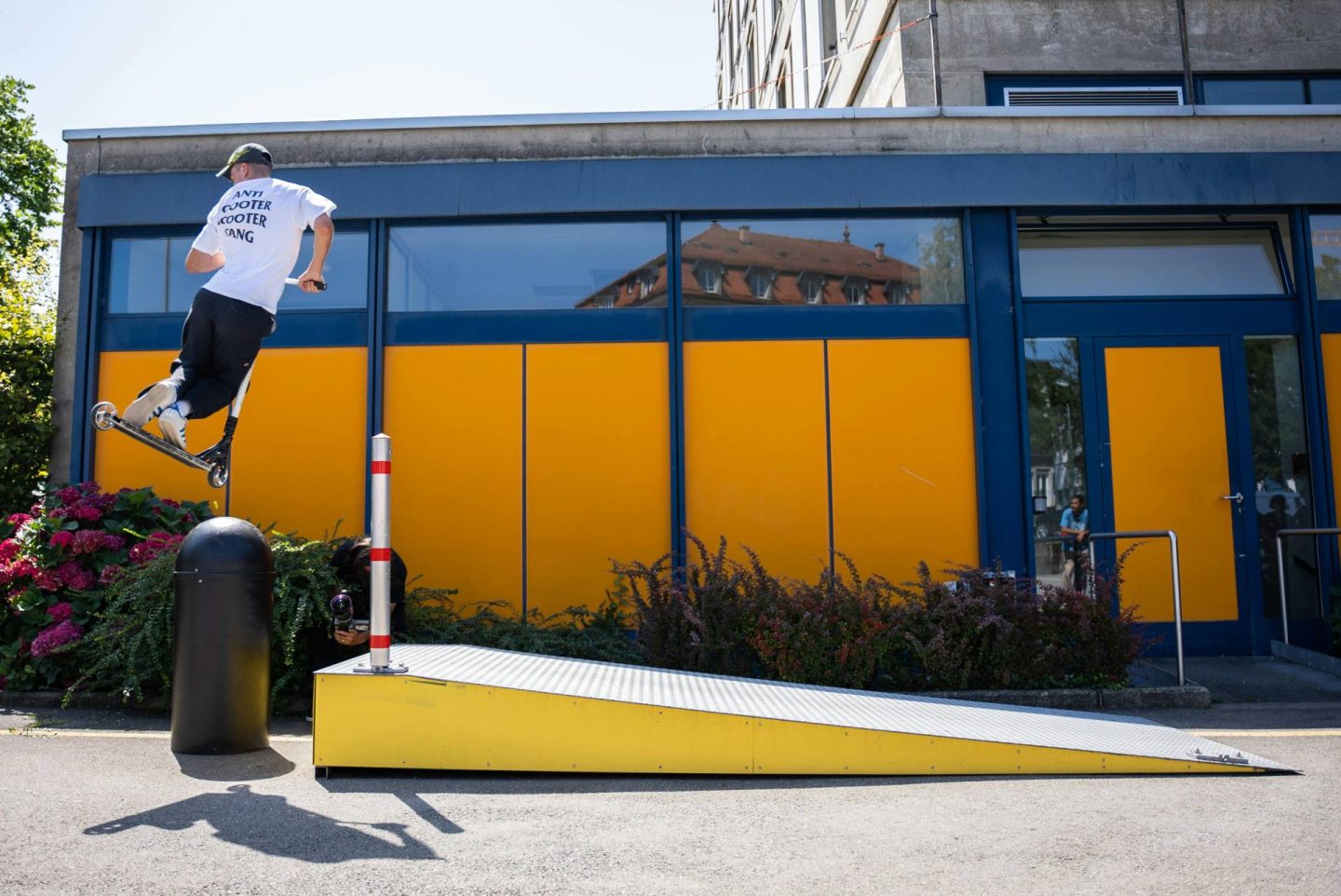*Collaboration
The street stunt scooter, a staple in urban sports culture, has evolved dramatically from its humble beginnings. What started as a simple mode of transportation has transformed into a dynamic tool for athletic expression and competition. This evolution mirrors broader trends in action sports, where innovation in design and community engagement combine to elevate relatively simple concepts into global phenomena.
Origins and Early Development
The modern scooter traces its roots back to the early 20th century. However, the version most similar to today’s stunt scooters began to appear in the late 1990s. Originally crafted as toys meant for children, these early scooters were designed for convenience and easy use. They typically featured a foldable aluminium frame, a rudimentary folding mechanism, and small, hard wheels, ideal for light travel over smooth surfaces.
It was Razor, a company founded in 2000, that catapulted the scooter into mainstream visibility with their iconic model, the Razor A. While these early scooters were not built for tricks or high impact, they sparked a trend among young people who began to experiment with them in more adventurous ways.
Birth of a Sport
As scooters gained popularity, a niche community began pushing the boundaries of what could be done with these simple structures. Early adopters started modifying their scooters to handle more weight and endure the stress of jumps, grinds, and flips typically reserved for skateboards and BMX bikes. This DIY ethos led to the birth of the stunt scooter—or freestyle scooter—as a distinct category.
Manufacturers noticed this trend and soon began producing models specifically designed for stunts. These scooters differed from their predecessors in several crucial ways. They were constructed with more durable materials like reinforced steel or aluminium to withstand the rigours of trick riding. The wheels were made thicker and stronger, the decks became wider for better foot support, and the handlebars were welded instead of foldable to increase stability.
Technological Innovations and Design Refinement
The 2000s marked a period of rapid innovation in scooter technology. Companies like MGP (Madd Gear Pro), founded in 2002, and later models from brands like District and Envy, introduced advanced features such as integrated headsets, compression systems, and customised brake designs. These innovations not only enhanced performance but also increased the scooters’ aesthetic appeal and customization potential.
As street stunt scooters became more specialised, the sport itself began to stratify into various styles and disciplines, including park and street riding. Park scooters tend to be lighter and feature shorter decks to facilitate air tricks and flips, while street scooters are more robust, designed for grinding on rails and ledges in urban environments.
Cultural Impact and Global Reach
The evolution of stunt scooters has been paralleled by their growing cultural significance. Initially concentrated in urban centres in the United States and Europe, the sport has spread worldwide, with vibrant communities in Australia, Asia, and South America. This global diffusion was accelerated by the internet and social media platforms, where riders could share tricks, tips, and videos, inspiring others across the globe.
Competitions have also played a critical role in the development of the sport. Events like the ISA World Scooter Championships offer riders a stage to showcase their skills and push the sport forward. These competitions have helped elevate scooter riding from a hobbyist pursuit to a professional sport with its athletes, sponsorships, and fan bases.
Future Prospects
Today, the stunt scooter stands as a testament to the ingenuity and passion of its community. The continuous refinement of scooter technology and the increasing inclusion of scooters in mainstream action sports events suggest a bright future for this dynamic sport.
Moreover, with increasing attention to sustainable urban mobility and the compact, eco-friendly nature of scooters, their utility extends beyond recreation, touching upon broader societal trends. As urban spaces become more congested, and the world more connected, the role of the stunt scooter is likely to expand, blending utility with expression in the fabric of modern city life.
The journey of the stunt scooter from a children’s toy to a platform for athletic artistry reflects a broader narrative of innovation and adaptation. As riders continue to push the boundaries of what’s possible, the story of the street stunt scooter is far from over, promising new tricks, trends, and transformations in the years to come.



